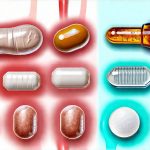Chemical cystitis is a frustrating and often debilitating condition characterized by inflammation of the bladder caused not by infection (like a typical urinary tract infection), but by sensitivity to substances commonly found in everyday life. Unlike infectious cystitis, which responds well to antibiotics, chemical cystitis presents a unique challenge because its root cause isn’t bacteria – it’s an irritated bladder lining reacting to specific chemicals. This can lead to chronic pelvic pain, frequent urination, and a significant impact on quality of life for those affected. Understanding the mechanisms behind this condition is key to navigating management strategies and improving well-being.
The symptoms of chemical cystitis closely mimic other bladder conditions, making diagnosis challenging. Individuals often experience a persistent urge to urinate, even with small amounts of fluid intake; pain in the pelvic area, which can range from mild discomfort to excruciating agony; and a burning sensation during urination. These symptoms are not always consistent but tend to flare up after exposure to trigger substances. It’s important to rule out other potential causes before arriving at a diagnosis of chemical cystitis, as conditions like interstitial cystitis/bladder pain syndrome (IC/BPS) can have overlapping symptoms. This highlights the need for careful medical evaluation and a process of elimination to pinpoint the underlying issue.
Understanding the Development of Chemical Cystitis
Chemical cystitis develops when the protective layer lining the bladder – called the urothelium – becomes compromised or overly sensitive. The urothelium normally acts as a barrier, preventing substances from irritating the underlying tissues. When this barrier is weakened, various chemicals can penetrate and trigger an inflammatory response. Several factors can contribute to this breakdown, including previous infections (even those successfully treated), radiation therapy, certain medications, and even prolonged exposure to irritants in personal hygiene products. The exact cause remains complex and often multifactorial.
It’s not always about a single, dramatic event that leads to chemical cystitis; it can be a gradual process of cumulative irritation over time. Think of the bladder as having a ‘tolerance threshold’. Repeated exposure to even seemingly mild irritants can slowly erode this tolerance, making the bladder increasingly reactive. This explains why many individuals with chemical cystitis report symptom onset after years of using certain products without issue – their bladders simply reached a point where they could no longer tolerate the continued irritation. The role of genetics and individual predisposition is also being investigated, as some people seem more susceptible than others.
The inflammatory response itself contributes to the cycle of pain and discomfort. As the bladder becomes inflamed, it releases signaling molecules that amplify the sensation of urgency and pain. This can lead to a vicious cycle where increased awareness of bladder sensations intensifies anxiety about urination, further exacerbating symptoms. While not an autoimmune disease in the traditional sense, there is evidence suggesting immune system involvement in some cases, particularly when chronic inflammation persists.
Common Chemical Triggers
Identifying specific triggers is crucial for managing chemical cystitis. Unfortunately, this can be a difficult process, as sensitivities vary greatly from person to person. However, some common culprits include:
- Soaps and detergents: Particularly those with strong fragrances or dyes.
- Bubble baths & feminine hygiene products: Often contain harsh chemicals that irritate the bladder.
- Personal care products: Including lotions, creams, and wipes containing alcohol, perfumes, or preservatives.
- Certain foods and beverages: Acidic fruits (citrus), caffeine, artificial sweeteners, spicy foods, and alcoholic drinks are frequently reported triggers.
- Medications: Some pain relievers, antihistamines, and diuretics can exacerbate symptoms.
A careful elimination diet and product review – essentially a process of removing potential irritants one by one and observing the effect on symptoms – is often recommended to pinpoint individual sensitivities. This requires patience and diligent record-keeping. It’s important to note that it isn’t always the chemicals themselves causing irritation, but rather how they interact with an already sensitive bladder lining.
The Role of Pelvic Floor Dysfunction
Pelvic floor dysfunction (PFD) is frequently observed in individuals with chemical cystitis and can significantly contribute to their symptoms. The pelvic floor muscles support the bladder, bowel, and uterus. When these muscles are tense or weakened, they can put pressure on the bladder, leading to increased frequency, urgency, and pain. PFD often develops as a consequence of chronic pain, as individuals unconsciously tighten their pelvic floor muscles in an attempt to protect themselves from discomfort.
This creates a feedback loop where muscle tension exacerbates bladder symptoms, which then leads to more muscle tightening. Addressing PFD is therefore a vital component of chemical cystitis management. Treatment typically involves pelvic floor physical therapy, which aims to release tight muscles and strengthen weak ones. Techniques such as biofeedback and diaphragmatic breathing can also help patients regain control over their pelvic floor function.
Diagnostic Challenges & Misdiagnosis
Diagnosing chemical cystitis accurately is a significant hurdle. The overlapping symptoms with other bladder conditions – most notably interstitial cystitis/bladder pain syndrome (IC/BPS) – often lead to misdiagnosis or delayed diagnosis. Unlike IC/BPS, which is thought to involve structural changes in the bladder wall and potentially autoimmune processes, chemical cystitis primarily stems from sensitivity to external irritants.
The diagnostic process typically involves: – A thorough medical history, including detailed information about potential triggers and symptom patterns. – Ruling out other causes of urinary symptoms, such as UTIs, kidney stones, and bladder cancer. – Cystoscopy (visual examination of the bladder with a camera) may be performed to assess the bladder lining, but often appears normal in chemical cystitis. – Urine tests to rule out infection. The process can be frustrating for patients, requiring multiple consultations and investigations before arriving at an accurate diagnosis. A healthcare professional specializing in pelvic pain or urogynecology is best equipped to navigate this complex diagnostic landscape.
It’s important to remember that managing chemical cystitis is often about minimizing exposure to triggers and supporting the body’s natural healing processes rather than “curing” the condition entirely. This requires a proactive approach, self-awareness, and collaboration with healthcare professionals.





















